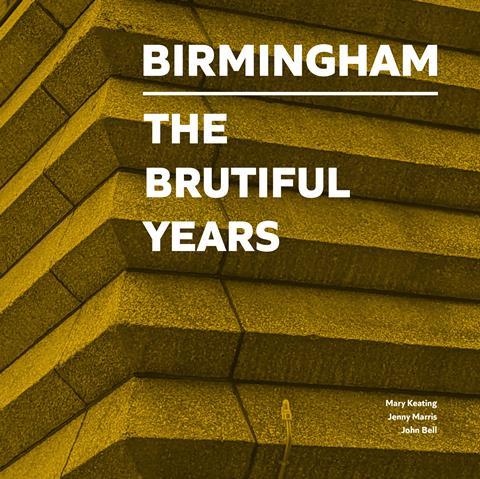Joe Holyoak welcomes a new book on Birmingham’s modernist architecture, but despairs at a civic culture that fetishises the wrecking ball

I can’t remember who I stole the phrase from, but when talking about the appreciation of architecture, I have often referred to the idea of the historical shadow. This is the idea that, after a certain passage of time, a period of architectural production falls under a shadow of disrepute. After more time has passed, the shadow moves on, light once more falls upon the period in question, and it is re-evaluated.
We can relate that to our own perception, and the process is very understandable. The practical problem with it is that, during the duration of the shadow, a lot of buildings deemed disreputable get demolished. Their subsequent re-assessment is of academic interest only.
The Victorians considered Georgian architecture to be boring, and demolished large amounts of it. We now value it highly. I became a conservationist in the 1970s, and joined the Victorian Society, when Victorian architecture was widely written off, and being indiscriminately demolished. It is now thought to be respectable and interesting, that of it that remains.
The historical shadow has now moved across mid-20th century modernism. (Keeping pace with the shadow, I am now, in addition to defending Victorian architecture, also a member of the Casework Committee of the 20th Century Society). The products of mid-20th century modernism are threatened across the country, nowhere more than in Birmingham.

It is puzzling to consider how buildings, which at the time they were built received much praise and were the cause of civic pride, a few decades later become the object of hate and derision, and generate calls for their demolition. An outstanding illustration of this process is Birmingham’s Central Library, designed by John Madin, and opened by the Prime Minister Harold Wilson in 1974.
It was a monumental inverted ziggurat, in precast and in situ concrete: labelled as Brutalism, although Madin denied the term. It was the largest municipal library, outside of a capital city, in Europe, and a building which the City Council was enormously proud to own. Madin’s library replaced the Grade II listed 1882 Reference Library, for which I, as a new member of the Victorian Society, gave evidence against its demolition at the 1973 public inquiry.
Forty years later, I was a member of the Friends of the Central Library, formed in 2006, campaigning against the proposed demolition of Madin’s library. Two recommendations for statutory listing were made by English Heritage, in 2003 and 2009, both turned down by Secretaries of State. There were accusations of political interference in both cases.
Several practical reasons for demolition were given by the Council and by the developers Argent, who planned to redevelop the site as commercial space. All these reasons were shown by the Friends to be without basis. It could have been retained and, if necessary, reused for a new purpose. The true reason for its demolition was that it was viscerally hated by those in power (conveniently, for the commercial redevelopment opportunity its demolition offered), just as its Victorian predecessor was forty years earlier.
“So has Birmingham learned anything from this farce?” It appears not.
In 2015 the Friends were joined in their campaign by a new organisation, Brutiful Birmingham. As well as defending the library (which was demolished later in 2015), Brutiful took on the wider task of educating people to see the merits of mid-20th century architecture. For the past five years, three of the group’s members – Mary Keating, Jenny Marris and John Bell – have been writing a monthly column in the Birmingham Post, featuring 20th century buildings, many of them unappreciated and often threatened.
Their first column was about the 225 metre-long Ringway Centre – offices and shops on Smallbrook Queensway in the city centre. It was designed by James Roberts, architect of the nearby Rotunda, and opened in 1962. Andy Foster, author of the Pevsner guide to Birmingham, described it as “the best piece of mid-C20 urban design in the city”. This fine building was threatened with demolition when the column was written, and it still is today.
The authors have now produced a book – Birmingham: the Brutiful Years – containing a selection of their 60 columns, with commentaries and additional photographs. Published by The Modernist, it is a lovely production which covers a wide range of buildings. There are pages on Spaghetti Junction (50 years old this year), relief sculptures by William Mitchell, churches by Maguire and Murray, and Richard Gilbert Scott, and two of my favourites, buildings at the University of Birmingham by Howell, Killick, Partridge and Amis.
The term Brutalist is used a bit too indiscriminately perhaps, as it often is. But everything the authors write about is interesting and deserving of attention. Will it have any effect on the perception of those who make decisions? Concerning the library’s needless destruction, they write: ”So has Birmingham learned anything from this farce?” It appears not.
Postscript
Birmingham: The Brutiful Years by Mary Keating, Jenny Marris and John Bell is published by the modernist society
Joe Holyoak is an architect and urban designer practising in Birmingham
















1 Readers' comment